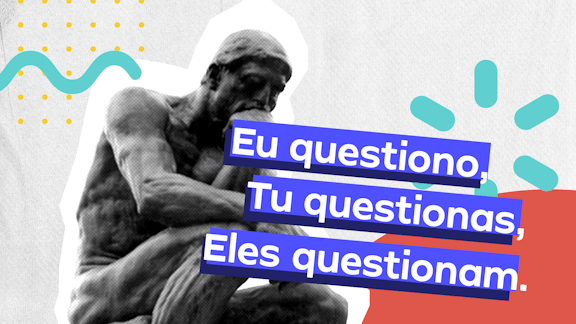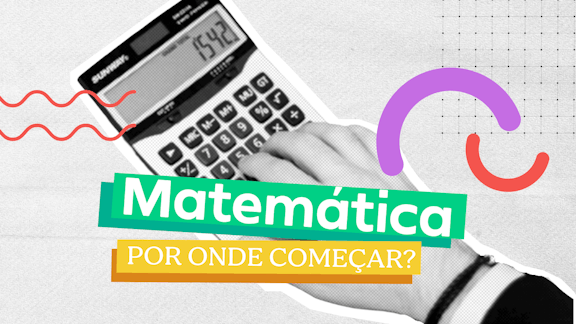Questão 125ed97d-6a
Prova:UPE 2021
Disciplina:Inglês
Assunto:Pronome objetivo | Objective pronoun, Pronome subjetivo | Subjective pronoun, Pronomes e adjetivos possessivos | Possessive pronouns and adjectives, Pronome possessivo substantivo | Possessive pronoun, Palavras conectivas | Connective words, Pronomes | Pronouns
In the 2
nd paragraph: Historically, distance learning described correspondence courses in which
students would communicate with their schools or teachers by mail., in which is
In the 2
nd paragraph: Historically, distance learning described correspondence courses in which
students would communicate with their schools or teachers by mail., in which is
Text 1
What is Distance Learning and Why Is It So Important?

1 Distance learning – any form of remote education where the student is not physically present for
the lesson – is booming thanks to the power of the Internet. In fact, there are a number of
advantages of learning remotely over even traditional teaching models. As the Internet blurs the
line between near and far, distance learning is set to disrupt the current paradigm of education.
2 Historically, distance learning described correspondence courses in which students would
communicate with their schools or teachers by mail. More recently, distance education has
moved online to include a huge range of systems and methods on practically any connected
device.
3 Distance education is clearly different from regular education in terms of a student or teacher‘s
physical presence. For the most part, it translates into increased freedom for both learners and
educators, but it also requires higher degrees of discipline and planning to successfully complete
the course of study.
4 The enhanced freedom of remote learning is most clearly seen in the fact that students can
choose courses that fit their schedules and resources. (Teachers can do the same.) And in the
case of digital learning, students can also choose the location and teaching styles that best suit
their needs.
5 Remote education is certainly not a magic bullet and there will always be a place for in-class
learning. At the same time, distance learning still has a lot of untapped potential to reach students
where they are and connect educators and learners in new ways. From increased flexibility to
new learning styles, it seems that the future of learning will be as diverse in time and place as it
will be in thought.
Disponível em: https://www.viewsonic.com/library/education/what-is-distance-learning-and-why-is-it-so-important/. Texto adaptado.
Acesso em: 20 set. 2020.
Text 1
What is Distance Learning and Why Is It So Important?

1 Distance learning – any form of remote education where the student is not physically present for
the lesson – is booming thanks to the power of the Internet. In fact, there are a number of
advantages of learning remotely over even traditional teaching models. As the Internet blurs the
line between near and far, distance learning is set to disrupt the current paradigm of education.
2 Historically, distance learning described correspondence courses in which students would
communicate with their schools or teachers by mail. More recently, distance education has
moved online to include a huge range of systems and methods on practically any connected
device.
3 Distance education is clearly different from regular education in terms of a student or teacher‘s
physical presence. For the most part, it translates into increased freedom for both learners and
educators, but it also requires higher degrees of discipline and planning to successfully complete
the course of study.
4 The enhanced freedom of remote learning is most clearly seen in the fact that students can
choose courses that fit their schedules and resources. (Teachers can do the same.) And in the
case of digital learning, students can also choose the location and teaching styles that best suit
their needs.
5 Remote education is certainly not a magic bullet and there will always be a place for in-class
learning. At the same time, distance learning still has a lot of untapped potential to reach students
where they are and connect educators and learners in new ways. From increased flexibility to
new learning styles, it seems that the future of learning will be as diverse in time and place as it
will be in thought.
Disponível em: https://www.viewsonic.com/library/education/what-is-distance-learning-and-why-is-it-so-important/. Texto adaptado.
Acesso em: 20 set. 2020.
A
a sort of connector.
B
an object pronoun.
C
a subject pronoun.
D
an adjective pronoun.
E
a possessive pronoun.
Gabarito comentado
Áida Setton ZylberglejdProfessora de Inglês e Tradutora. Certificado de Proficiência pela Cambridge University. Tutora na Polytechnic of Central London.
A questão cobra conhecimento gramatical, especificamente
sobre pronomes.
Vamos analisar o enunciado:
In the 2 nd paragraph: Historically, distance learning described correspondence courses in which students would communicate with their schools or teachers by mail., "in which" is...
Tradução - No segundo parágrafo: Historicamente, o ensino à distância descreve os cursos por correspondência nos quais os alunos se comunicam com suas escolas ou professores por correio., "em que" é ...
Vejamos o trecho em questão, parágrafo 2:
Historically, distance learning described correspondence courses in which students would communicate with their schools or teachers by mail. More recently, distance education has moved online to include a huge range of systems and methods on practically any connected device.
Tradução - Historicamente, o ensino à distância descreve os cursos por correspondência nos quais os alunos se comunicam com suas escolas ou professores por correio. Mais recentemente, a educação à distância mudou para o mundo online para incluir uma grande variedade de sistemas e métodos em praticamente qualquer dispositivo conectado.
"In which", cuja tradução é "em que, no qual , nos quais" está funcionando como pronome relativo. Como pronomes relativos são os que se relacionam com um termo anterior, ao mesmo tempo que desempenham o papel de pronomes, também exercem a função de conectivos.
Analisando as alternativas teremos:
A) Correto - a sort of connector. = um tipo de conectivo
B) Incorreto - an object pronoun. = um pronome objeto
C) Incorreto - a subject pronoun. = um pronome sujeito
D) Incorreto - an adjective pronoun. = um pronome adjetivo
E) Incorreto - a possessive pronoun. = um pronome possessivo
Gabarito do Professor: Letra A.
Vamos analisar o enunciado:
In the 2 nd paragraph: Historically, distance learning described correspondence courses in which students would communicate with their schools or teachers by mail., "in which" is...
Tradução - No segundo parágrafo: Historicamente, o ensino à distância descreve os cursos por correspondência nos quais os alunos se comunicam com suas escolas ou professores por correio., "em que" é ...
Vejamos o trecho em questão, parágrafo 2:
Historically, distance learning described correspondence courses in which students would communicate with their schools or teachers by mail. More recently, distance education has moved online to include a huge range of systems and methods on practically any connected device.
Tradução - Historicamente, o ensino à distância descreve os cursos por correspondência nos quais os alunos se comunicam com suas escolas ou professores por correio. Mais recentemente, a educação à distância mudou para o mundo online para incluir uma grande variedade de sistemas e métodos em praticamente qualquer dispositivo conectado.
"In which", cuja tradução é "em que, no qual , nos quais" está funcionando como pronome relativo. Como pronomes relativos são os que se relacionam com um termo anterior, ao mesmo tempo que desempenham o papel de pronomes, também exercem a função de conectivos.
Analisando as alternativas teremos:
A) Correto - a sort of connector. = um tipo de conectivo
B) Incorreto - an object pronoun. = um pronome objeto
C) Incorreto - a subject pronoun. = um pronome sujeito
D) Incorreto - an adjective pronoun. = um pronome adjetivo
E) Incorreto - a possessive pronoun. = um pronome possessivo
Gabarito do Professor: Letra A.






